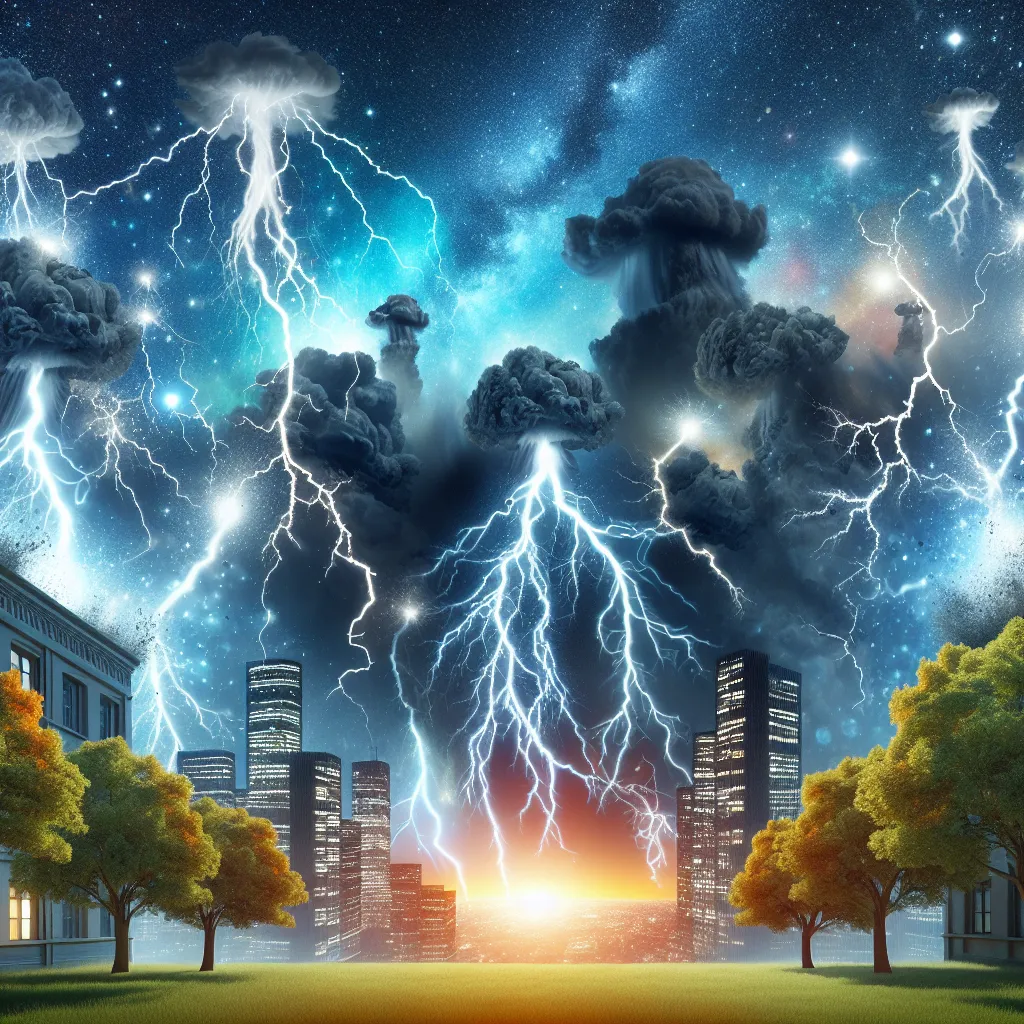Nature can showcase its raw power in the blink of an eye through a lightning strike, causing immense damage and painting the sky with dramatic light and sound. These bolts can travel at speeds of 270,000 miles per hour and reach temperatures of 30,000 degrees Celsius—five times hotter than the surface of the Sun. Ready to see why lightning isn’t something to mess with? Let’s dive into the thrilling power behind one of nature’s most awe-inspiring phenomena.
Lightning happens a lot more often than you’d think—over 3 million flashes light up the world every single day. That’s around 44 strikes every second! With these kinds of numbers, it’s no wonder people can find themselves too close for comfort now and then. For instance, one woman, recording a storm from her balcony, had lightning strike less than a meter from where she stood. Her reaction? She ran and screamed—totally understandable given how close she came to danger.
In another clip, a person filming the storm caught a lightning strike hit a parked car, leaving them ducking in shock. Lightning is not just about the flash; it’s also about the sound. Some lightning strikes can be so loud they cause temporary hearing loss. With recorded volumes hitting 180 decibels, it’s not surprising your ears could take a hit.
Danger often lurks in open fields and near water during lightning storms. One clip vividly shows the risks, and though no one was harmed, it serves as a reminder of nature’s unpredictable fury. While lightning strikes can leave someone with severe permanent injuries, they can also leave fascinating marks called lightning scars or flowers. These rare patterns appear where blood vessels rupture from the intense heat but typically fade away in days.
Lightning loves tall objects. Trees often get struck because they contain moisture, making them likely targets. One clip shows a tree exploding from the internal heat and expanding sap after a lightning strike. Sometimes, lightning can even set trees on fire, creating an even rarer sight.
Our modern skylines are dotted with skyscrapers and buildings protected by lightning rods. These devices are crucial in preventing direct strikes and the resulting fires. By safely dispersing electrical charges into the ground, they protect structures from massive damage.
Lightning usually accompanies tropical and torrential storms, especially during heavy rains, hurricanes, and supercell storms. Texas, well-known for experiencing such intense weather, frequently hosts supercell storms, which can have astonishing lightning rates—recording over 30,000 flashes in just two hours. In 2023, Texas had nearly 42 million lightning events.
On the other hand, Florida holds the title of the lightning capital of the U.S. despite having fewer strikes than Texas. Florida’s high lightning density—285 lightning events per square mile—combined with its grim statistics of over 30 deaths and 2,000 injuries in recent decades, explains why it earns this dangerous distinction.
And if you think regular lightning is impressive, volcanic lightning will blow your mind. Occurring during volcanic eruptions, this rare phenomenon involves static electricity generated by colliding particles of volcanic ash. It’s like watching a sci-fi movie come to life.
Remember, if you ever find yourself caught in a storm, avoid tall objects, open fields, and water. Hearing thunder means you’re close enough to be struck by lightning, so take cover.
Thanks for sticking around! Stay safe, and keep your eyes on the skies.






